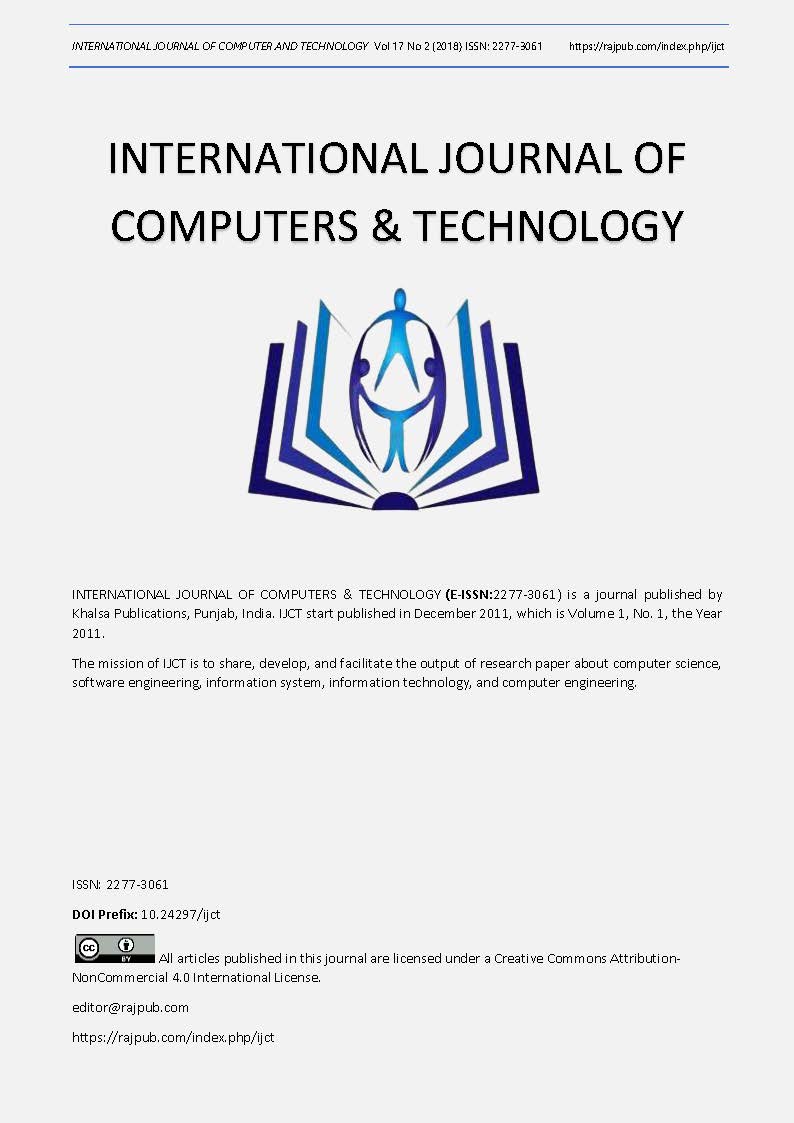Mobile Health-monitoring System with Inference, Fall Detection, and Cardiovascular Prediction
DOI:
https://doi.org/10.24297/ijct.v17i2.7621Keywords:
health-monitoring, health-caring, wireless sensor, mobile network, inference, fall detection, cardiovascular prediction, data miningAbstract
As the lifetime of human being gets longer, the problems of chronic diseases grow more. In order to make sure the health statuses of patients are not getting worse, they must be health-monitored continuously in a long term. In this paper, a mobile health-monitoring system is built for patients in place of traditional health-caring manners, which not only gives patients more free spaces, but also can save medical resources, diagnose and predict diseases earlier. In the procedures of health-caring in-house and emergency treatment, a series of vital sensors are combined by integrating sensor network and wireless/mobile network technology to continuously transmit physiological signals of patients to a medical center in a real time, and then doctors can monitor the health statuses of patients exactly, thereby proceeding with diagnosing, recovering, and treatments.
Downloads
References
M. Akay, et al., “Unconstrained monitoring of body motion during walking,” IEEE Engineering in Medicine and Biology Magazine, Vol. 22, No. 3, pp. 104-109, 2003.
U. Anliker, et al., “AMON: a wearable multiparameter medical monitoring and alert system,” IEEE Transactions on Information Technology in Biomedicine, Vol. 8, No. 4, pp. 415-427, 2004.
C. C. Chang and C. J. Lin, “LIBSVM: a library for support vector machines,” ACM Transactions on Intelligent Systems and Technology, Vol. 2, No. 3, pp. 27:1-27:27, 2011, software available at http://www.csie.ntu.edu.tw/~cjlin/libsvm.
A. H. Chen, et al., “HDPS: heart disease prediction system,” Proc. Computing in Cardiology, Vol. 38, pp. 557-560, 2011.
M. Deriche, “Feature selection using ant colony optimization,” Proc. the 6th International Multi-conference on Systems, Signals and Devices, pp. 1-4, 2009.
R. Diao and Q. Shen, “Two new approaches to feature selection with harmony search,” Proc. the IEEE International Conference on Fuzzy Systems, pp. 1-7, 2010.
E. Duthie, “Falls,” Medical Clinics of North America, Vol. 73, No. 6, pp. 1321-1336, 1989.
L. W. Goix, et al., “Situation inference for mobile users: a rule based approach,” Proc. International Conference on Mobile Data Management, 2007, pp. 299-303, 2007.
S. Guiasu, Information Theory with Applications, McGraw-Hill, 1977.
M. A. Hall and L. A. Smith, “Practical feature subset selection for machine learning,” Proc. the 21st Australasian Computer Science Conference, pp. 181-191, 1998.
Y. F. Huang and C. M. Wang, “Self-adaptive harmony search algorithm for optimization,” Expert Systems with Applications, Vol. 37, No. 4, pp. 2826-2837, 2010.
D. Isern, et al., “Home care individual intervention plans in the K4Care platform,” Proc. the 21st IEEE International Symposium on Computer-based Medical Systems, pp. 455-457, 2008.
E. J. Ko, et al., “Ontology-based context modeling and reasoning for U-healthcare,” IEICE Transactions on Information and Systems, Vol. E90-d, No. 8, pp. 1262-1270, 2007.
B. Krausz and R. Herpers, “Event detection for video surveillance using an expert system,” Proc. the 1st ACM Workshop on Analysis and Retrieval of Events/Actions and Workflows in Video Streams, pp. 49-55, 2008.
P. L. Lanzi, “Fast feature selection with genetic algorithms: a filter approach,” Proc. the IEEE International Conference on Evolutionary Computation, pp. 537-540, 1997.
MedGadget, “Another mobile monitoring system promised,” 2007, available at http://www.medgadget.com/archives/2007/01/another_mobile.html.
V. Mitra and C. J. Wang, “A neural network based audio content classification,” Proc. the IEEE Region 10 Conference, pp. 1494-1499, 2007.
F. Paganelli and D. Giuli, “An ontology-based context model for home health monitoring and alerting in chronic patient care networks,” Proc. the 21st IEEE International Conference on Advanced Information Networking and Applications Workshops, pp. 838-845, 2007.
S. B. Patil and Y. S. Kumaraswamy, “Intelligent and effective heart attack prediction system using data mining and artificial neural network,” European Journal of Scientific Research, Vol. 31, No. 4, pp. 642-656, 2009.
Sandia National Laboratories, “Jess, the rule engine for the Java platform,” 2013, available at http://www.jessrules.com/.
V. D. Shet, et al., “VidMAP: video monitoring of activity with Prolog,” Proc. IEEE Conference on Advanced Video and Signal Based Surveillance, pp. 224-229, 2005.
J. Soni, et al. “Intelligent and effective heart disease prediction system using weighted associative classifiers,” International Journal of Computer Science and Engineering, Vol. 3, No. 6, pp. 2385-2392, 2011.
G. Subbalakshmi, et al., “Decision support in heart disease prediction system using Naive Bayes,” Indian Journal of Computer Science and Engineering, Vol. 2, No. 2, pp. 170-176, 2011.
M. Subramanian, et al., “Novel sensor technology integration for outcome-based risk analysis in diabetes,” Proc. the 1st International Conference on Health Informatics, Vol. 2, pp. 119-126, 2008.
R. Tideiksaar, Falling in Old Age: Prevention and Management, 2nd ed., Springer-Verlag, 1997.
UCI Machine Learning Repository, 2006, available at http://archive.ics.uci.edu/ml/datasets/Heart+Disease.









